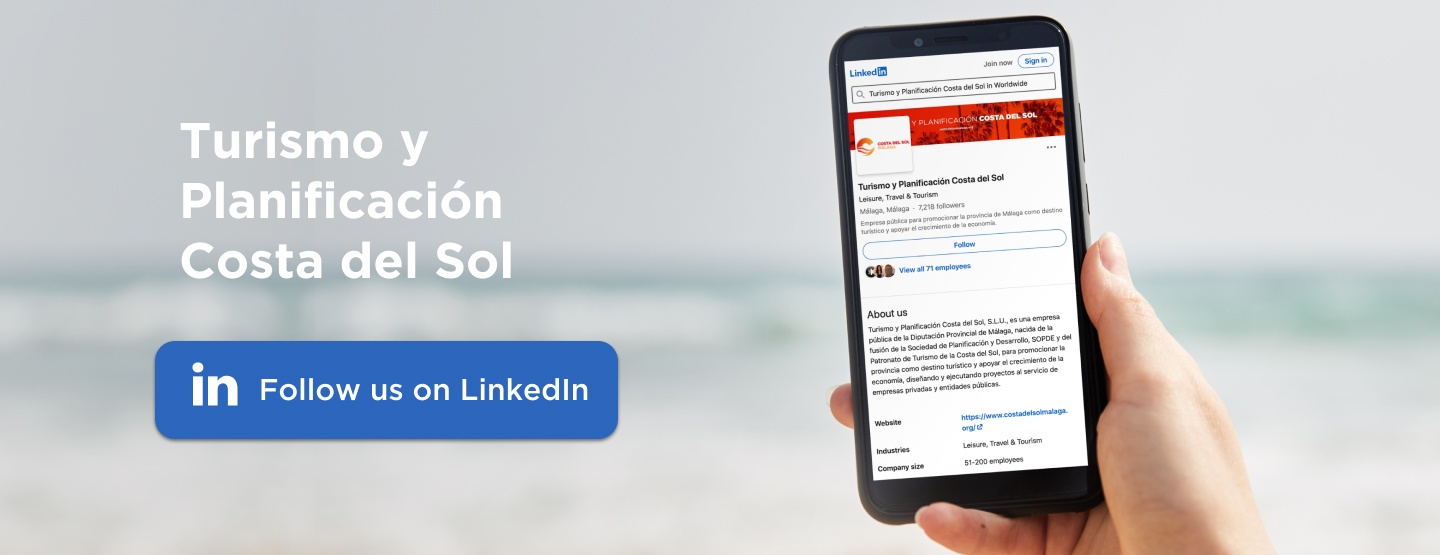The constant advancement in technology has given rise to a new phase in the evolution of the web, known as Web 3.0. This step forward will radically change the way in which we interact online and comes with a number of concrete applications that will have a profound impact on different industries, such as tourism. In this post, we are going to explain what Web 3.0 is, its key characteristics and how it’s transforming the tourism industry, specifically in the Costa del Sol.
What is Web 3.0?
Web 3.0, often known as the “Semantic Web”, represents the next step in the evolution of the World Wide Web. While Web 1.0 focused on the publication of static content and Web 2.0 enabled social interaction and collaboration online, Web 3.0 is characterised by its ability to understand context and the meaning of web content. In other words, Web 3.0 seeks to create a smarter and more personalised experience for users by taking advantage of artificial intelligence (AI) and semantics.

The characteristics of Web 3.0
The key characteristics of Web 3.0 are as follows:
1. Semantics
Web 3.0 is able to understand the meaning of web content. This means that machines can effectively analyse and relate data, which translates into more accurate searches and answers that are more contextually relevant.
2. Artificial intelligence (AI)
AI plays a leading role in Web 3.0. Machine learning algorithms and the ability to process large quantities of data enable Web 3.0 applications to learn and adapt to users’ needs and preferences.
3. Interconnection
Web 3.0 seeks to create a network of data in which the elements are interconnected and interoperable. This means that data can be moved between applications and services more easily.
Web 3.0 applications
Web 3.0 applications cover a diverse selection of sectors, ranging from healthcare and education to, of course, tourism. Some concrete applications include:
1. Semantic search
Web 3.0 search engines are able to understand users’ search intentions better and provide more accurate results. This is particularly useful for planning trips.
2. Virtual assistants
Virtual assistants powered by AI can provide personalised travel recommendations, answer questions and help plan itineraries.

3. Augmented Reality (AR) and Virtual Reality (VR)
Augmented Reality and Virtual Reality give travellers the opportunity to explore a destination virtually before visiting in the flesh, facilitating purchasing decisions.
4. Comments and reviews
Online reviews are becoming increasingly useful and reliable as Web 3.0 analyses the context of the experiences shared by other travellers.
5. The metaverse
The metaverse is another application that will be interconnected with the new semantic web as it offers a general view of what the Web 3.0 interface will look like. It will use Virtual Reality and Augmented Reality to create an immersive experience that combines digital elements with the natural world.
6. NFTs
NFTs are unique digital identifiers that cannot be modified or interchanged by other NFTs. Consequently, the tokens are non-fungible, meaning that their value is unique and cannot be substituted. They are increasingly popular in areas like art and fashion.
Examples of Web 3.0 applications in the Costa del Sol
The Costa del Sol is one of the most popular tourist destinations in Europe, renowned for its beautiful beaches, warm weather, delicious gastronomy, fascinating culture and boundless leisure activities. Here are some examples of how Web 3.0 is transforming the tourist experience in the province of Malaga:
1. Contextualised accommodation search
Online booking platforms like Booking.com and Airbnb are using semantic search to offer users accommodation options that perfectly meet their preferences and requirements. This includes recommendations based on location, budget, facilities and personalised reviews.
2. 3D virtual tours
A number of travel agencies and the Turismo Costa del Sol website are already offering 3D virtual tours of hotels, beaches and tourist attractions. Visitors are thus able to explore these places before making a reservation, which improves decision-making and reduces the risk of unwelcome surprises.

3. Virtual assistants for travel planning
Virtual assistants provide detailed information about places of interest, restaurants and activities in the Costa del Sol. The assistants adapt to user preferences and can help put together personalised itineraries.
4. Improved comments and reviews
Platforms like TripAdvisor and Google employ semantic analysis to understand the tone and context of user reviews. This helps travellers get a more accurate idea of the experiences shared by others.
The dawn of Web 3.0 and the future of the tourist experience
Web 3.0 is transforming the way in which we plan, experience and share our travel experiences. As it continues to evolve, the tourist experience will continue to improve in destinations like the Costa del Sol. It is expected that interconnected data and AI will play an even more important role in personalising travel and optimising customer satisfaction. Moreover, the integration of emerging technologies, like the Internet of Things (IoT) and blockchain, will provide increasingly higher levels of safety and efficiency in the tourism industry. Would you like to find out more? Head on over to our blog to discover the latest innovations in the sector.







